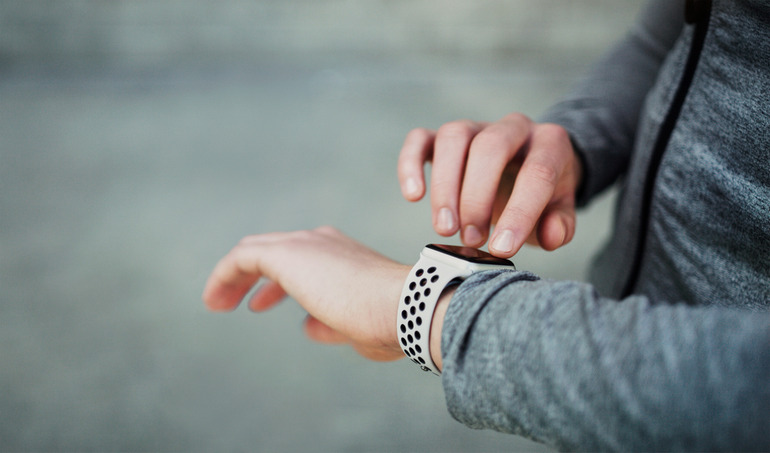A notable change is happening in the wearable technology industry, with smart rings becoming legitimate contenders threatening to oust the conventional smartwatch. As the smartwatch has always been the undisputed king of wearable technology, the emergence of purpose-driven devices such as the AI-based Oura Ring is threatening to shake up that order, somewhat similarly to how homebrewers and craft brewers have continually been redefining the quality and innovation of beer by rejecting what is not important. Just like brewers have optimised temperature, time, and ingredients to create the ultimate flavour, these smaller health wearables are getting uncomfortably close to the accurate determination of sleep, recovery, and readiness.
This isn’t just a passing tech trend; it marks a shift toward more intentional, data-driven tools, both in brewing and in how we care for our health. Platforms like the VulkanVegas сasino have recognised this shift toward more sophisticated, AI-driven user experiences, incorporating advanced personalisation technologies that mirror the intelligent adaptation seen in modern wearable devices.
The Smart Ring Revolution
Smart rings, as a shift of paradigm compared with the “do everything” concept of smartwatches, can be considered as a new category of highly accurate health monitoring devices. Oura ring, the first representative of this category, has shown that consumers are more than ever interested in depth rather than breadth of health tracking possibilities.
Smart rings, unlike smartwatches, which are trying to recreate the smartphone experience on a small display, are single-minded in their approach of biometric tracking and health feedback. Such a concentrated solution can offer more advanced sensors, extended battery life, and more precise data tracking, which is also a challenge even for high-end smartwatches.
The Science Behind Smart Ring Accuracy
The positioning of smart rings on the finger provides several biological advantages for health monitoring. Finger-based measurements offer more consistent skin contact and better blood flow detection compared to wrist-based devices, which can shift position throughout the day and suffer from motion artifacts.
Smart rings utilise multiple sensors that work in concert to provide comprehensive health data. These typically include:
- Photoplethysmography (PPG) sensors – Measure heart rate and blood oxygen levels.
- Temperature sensors – Track body temperature fluctuations throughout the day.
- Accelerometers – Monitor movement patterns and sleep positioning.
- Infrared sensors – Detect subtle changes in blood volume and circulation.
- Galvanic skin response sensors – Measure stress indicators through skin conductance.
The combination of optimal sensor placement and advanced AI algorithms allows smart rings to provide clinical-grade accuracy in many measurements, something that remains challenging for wrist-based devices.
Battery Life: The Smart Ring Advantage
One of the most significant advantages smart rings hold over smartwatches is battery performance. Whereas high-end smartwatches might need to be charged every day, good smart rings can last several days or even weeks between charges.
This long battery life is because of multiple design benefits that smart rings have over their wrist-worn counterparts. The lack of power-hungry displays, cellular radios, and complicated operating systems enables smart rings to use all of their limited battery capacity on sensor work and data transfer.
The following table illustrates typical battery performance across different wearable categories:
| Device Type | Average Battery Life | Charging Frequency | Power Consumption Factors |
| Smart Rings | 4-7 days | Weekly | Sensors only, no display |
| Basic Smartwatches | 1-2 days | Daily | Display, basic apps, GPS |
| Premium Smartwatches | 1-3 days | Daily/Every other day | Full OS, cellular, multiple radios |
| Fitness Trackers | 3-7 days | Weekly | Limited display, focused sensors |
The practical implications of extended battery life go beyond mere convenience. Consistent wear is crucial for accurate health monitoring, particularly for sleep tracking and circadian rhythm analysis. Devices that require frequent charging create gaps in data collection that can significantly impact the quality of health insights.
AI Integration and Health Insights
Recent smart rings, such as the Oura Ring, have been the first to introduce artificial intelligence into the field of personal health monitoring. These devices are not meant to merely gather and present raw data but rather employ machine learning algorithms to spot trends and patterns, and offer insights that can be acted upon.
The smart rings’ AI systems can process many data points in parallel to paint complete images of user health and wellness. It involves matching the quality of sleep to the daily activity, detecting stress trends by heart rate variability, or noticing the first indicators of disease by measuring temperature and resting heart rate.
Smart rings are most effective when it comes to creating a personal baseline for a particular user. AI-powered rings, in contrast to generic health advice, do acquire the individual physiological peculiarities of each user and give personalised advice based on their individual history of data.
This personalisation extends to several key areas where smart rings have shown superior performance:
- Sleep optimisation – Detailed analysis of sleep stages and recovery patterns.
- Activity guidance – Personalised recommendations based on readiness scores.
- Stress management – Real-time stress detection with recovery suggestions.
- Illness prediction – Early detection of potential health issues through pattern recognition.
- Recovery tracking – Monitoring physiological readiness for physical activity.
The AI systems continuously refine their understanding of individual users, creating increasingly accurate predictions and recommendations over time. This learning capability represents a significant advancement over traditional fitness trackers that rely on static algorithms and population averages.
Comfort and Wearability Factors
The physical construction of smart rings has some convincing benefits in being worn at all times, an attribute necessary in whole health tracking. They are also invisible during wear, unlike smartwatches, which may become uncomfortable during sleep or high-intensity physical exercise.
This comfort benefit directly influences the data quality and compliance of the user. Research indicates that the rates of wearable device abandonment are highly related to comfort concerns, especially when it comes to overnight use. Smart rings are the solution to this issue as they solve the volume and weight problems that cause discomfort when wearing smartwatches to sleep.
The producers of smart rings have placed a lot of investment in material science and ergonomic design to ensure the highest level of comfort when wearing. High-end models are made of titanium or ceramic material, which is very strong and lightweight and does not cause much irritation to the skin.
It also comes in handy in terms of social acceptability issues that some users of obvious fitness tracking devices may have, since smart rings look seamless and jewellery-like. Such discernment promotes daily usage in all social and occupational circumstances.
Data Accuracy and Clinical Applications
Perhaps the most significant advantage of smart rings lies in their data accuracy, particularly for cardiovascular and sleep metrics. The choice of finger placement in smart rings isn’t arbitrary—it allows for more stable sensor contact and superior signal quality compared to wrist-based devices. Just as brewers rely on consistent measurements for mash temps or pH levels to ensure batch quality, health tech requires precision.
Clinical studies have confirmed the accuracy of smart rings across several key metrics, with some results rivalling those of medical-grade monitors. This level of precision is increasingly valued not just by health-conscious individuals but also by medical professionals tracking chronic conditions, highlighting how small, refined tools can yield a big impact, much like the evolution from industrial beer to craft excellence.
Research has demonstrated smart ring accuracy across multiple health indicators:
- Resting heart rate – Within 1-2 BPM of clinical measurements.
- Heart rate variability – Strong correlation with medical ECG devices.
- Sleep stage detection – 80-90% accuracy compared to polysomnography.
- Body temperature – Precision within 0.1°C of core temperature trends.
- Blood oxygen saturation – Comparable to pulse oximetry in stable conditions.
This clinical-grade accuracy opens possibilities for smart rings in medical applications beyond consumer wellness, including chronic disease management and remote patient monitoring.
Integration With Health Ecosystems
Modern smart rings are designed to integrate seamlessly with broader health monitoring ecosystems, including electronic health records, fitness apps, and medical monitoring systems. This interoperability allows users to incorporate ring data into comprehensive health management strategies.
The API-first approach of leading smart ring manufacturers enables integration with popular health platforms like Apple Health, Google Fit, and specialized medical monitoring systems. This connectivity ensures that smart ring data can complement rather than compete with existing health tracking workflows.
Limitations and Challenges
Despite their advantages, smart rings face several limitations that prevent them from completely replacing smartwatches for all users. The lack of displays means that real-time data viewing requires a smartphone, which may not suit users who prefer immediate access to metrics.
Smart rings also cannot replicate many smartwatch features that some users consider essential, including:
- Notification management – No display for messages or alerts.
- GPS tracking – Limited ability to track outdoor activities independently.
- Payment processing – Most lack NFC capabilities for contactless payments.
- App ecosystem – No platform for third-party applications.
- Communication features – No calling or messaging capabilities.
These limitations mean that smart rings work best as specialised health monitoring devices rather than comprehensive smartwatch replacements.
Future Technology Developments
The smart ring category continues evolving rapidly, with manufacturers developing new sensors and capabilities that could further extend their advantages over smartwatches. Emerging technologies include advanced biometric sensors, longer-lasting batteries, and more sophisticated AI algorithms.
Future smart rings may incorporate blood glucose monitoring, blood pressure measurement, and other clinical-grade sensors that would be difficult to implement in smartwatch form factors. These developments could position smart rings as essential medical devices rather than consumer electronics.
Research laboratories are developing several next-generation sensors specifically designed for smart ring integration:
- Non-invasive glucose monitoring – Using optical sensors to detect blood sugar levels.
- Blood pressure estimation – Combining multiple sensor inputs for pressure calculations.
- Hydration tracking – Monitoring fluid levels through bioimpedance measurements.
- Stress hormone detection – Measuring cortisol levels through sweat analysis.
- Sleep apnea detection – Advanced respiratory monitoring during sleep.
These innovations could transform smart rings from fitness accessories into comprehensive health monitoring platforms that provide medical-grade insights for both consumers and healthcare providers.
Professional and Medical Applications
Healthcare professionals are increasingly recognising smart rings as valuable tools for patient monitoring and clinical research. The combination of high accuracy, patient compliance, and continuous monitoring makes smart rings attractive for various medical applications.
Chronic disease management is emerging as one of the most promising applications for smart rings. Much like how automated home brewing systems allow for hands-off control without sacrificing quality, these discrete devices offer continuous health monitoring without the inconvenience of bulky medical equipment. For individuals managing heart conditions, diabetes, or sleep disorders, the ability to track key health metrics effortlessly mirrors the value brewers place on clean, real-time data, ensuring better outcomes through consistency and precision.








